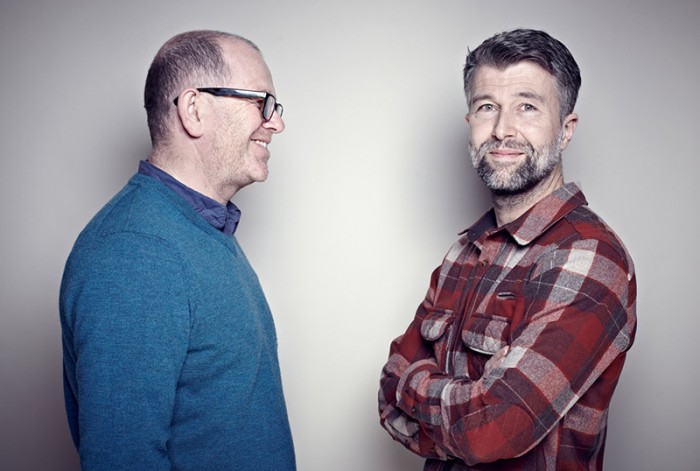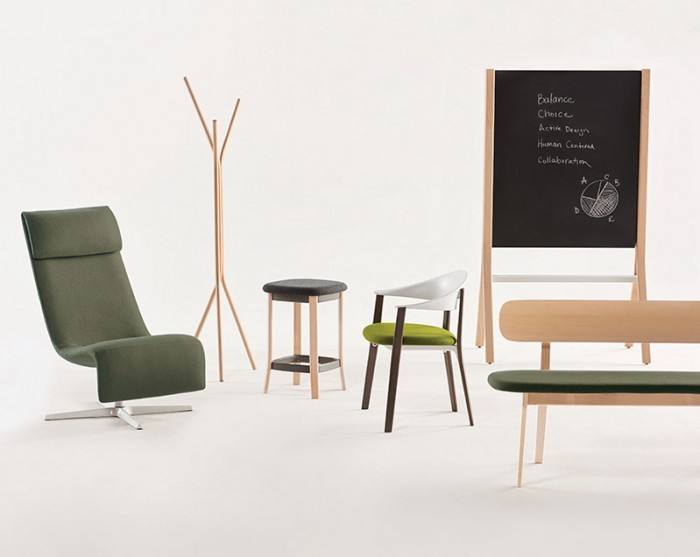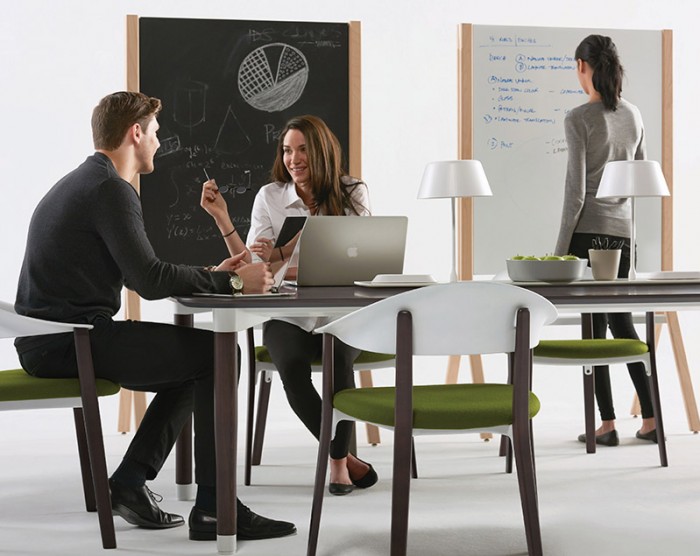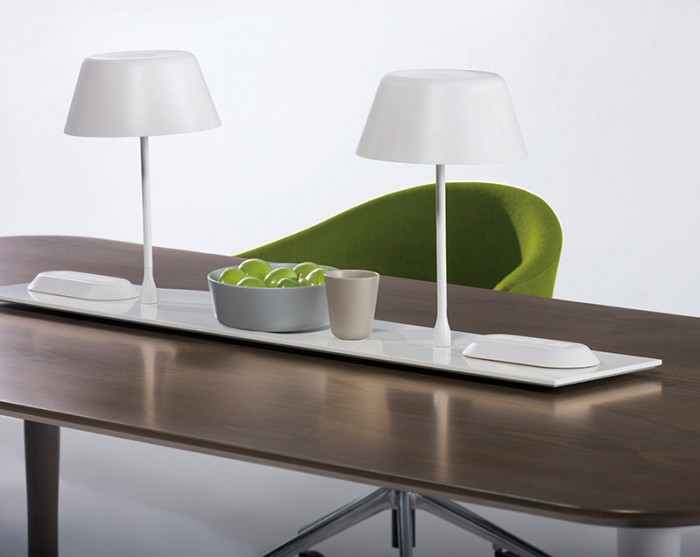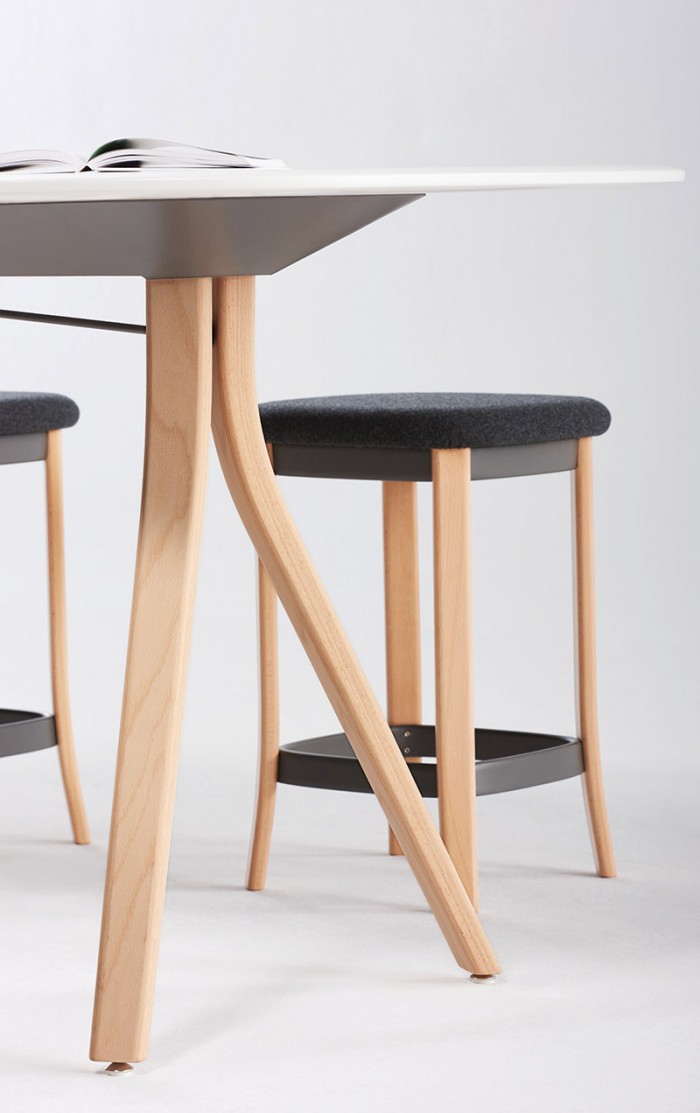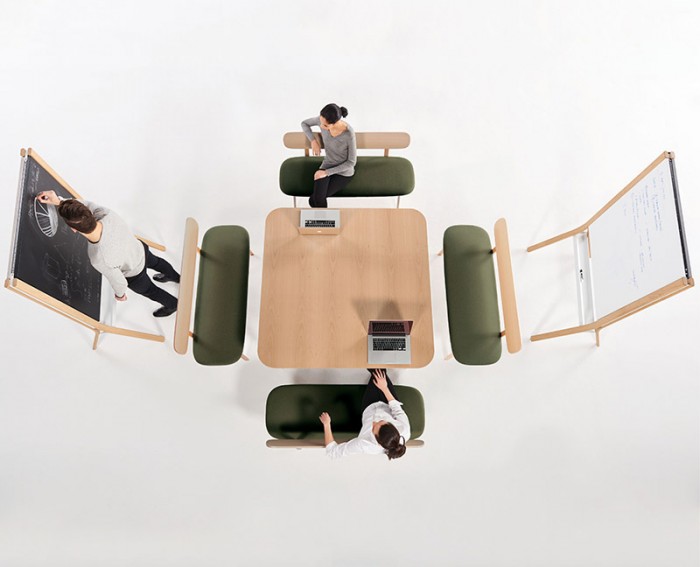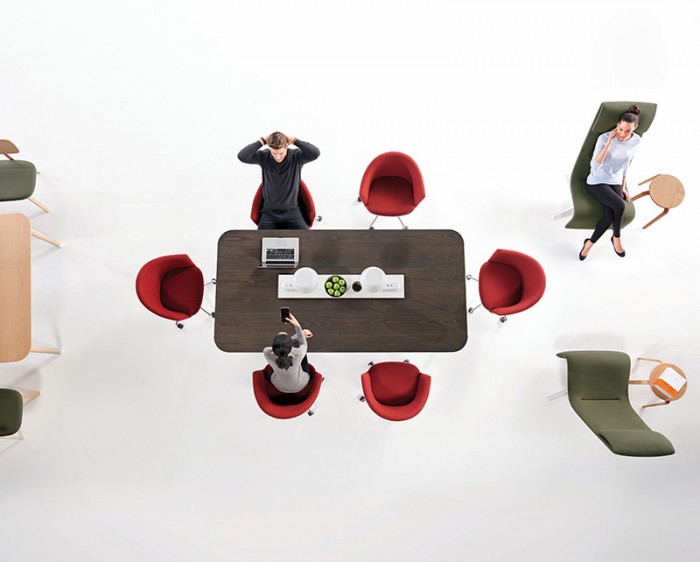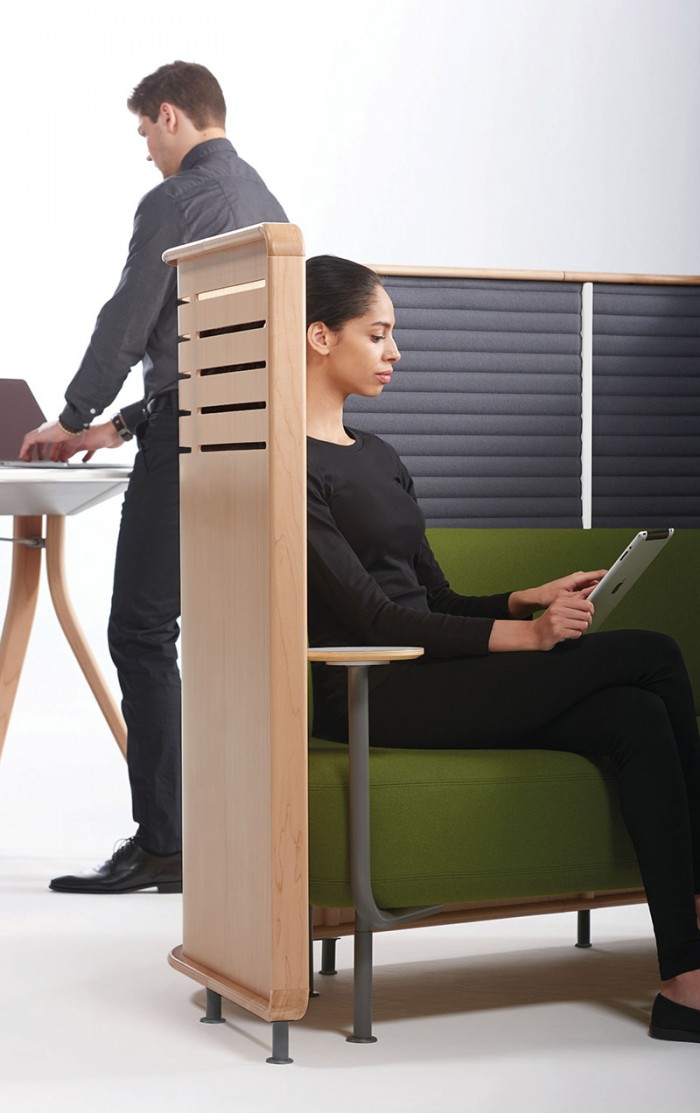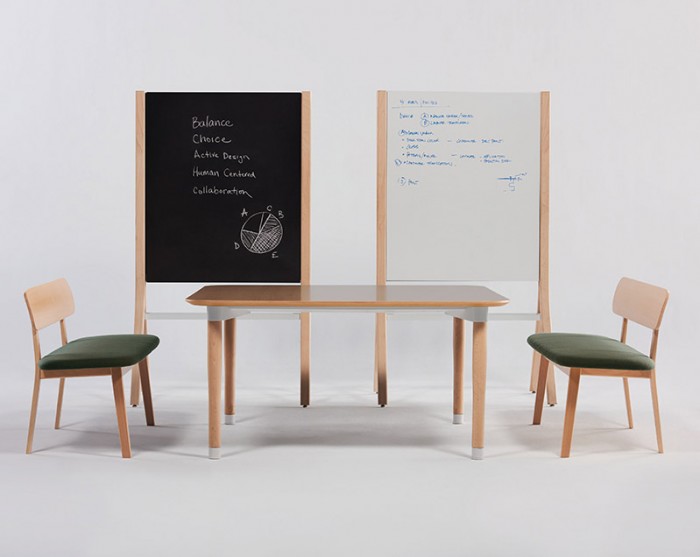Q&A With Luke Pearson and Tom Lloyd, PearsonLloyd
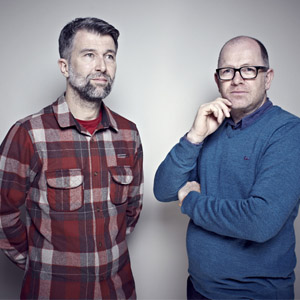 Luke Pearson and Tom Lloyd founded PearsonLloyd design studio in 1997. Since then, the London-based practise has served many sectors- including healthcare, office furniture, aviation and urban design- with a focus on identifying and responding to the shifting patterns of behavior in contemporary life. PearsonLloyd takes a collaborative approach to its work, embracing the restrictions imposed by production, the market, and other factors that define a brief. It’s work is grounded in research, and at the core is an attemp to understand the relationship between a product, its place, and the way people use it. in 2008, Tom and Luke were awarded the distinction of Royal Designers for Industry by The Royal Society of Arts. In August 2012, they were named one of the Top 50 Designers Shaping the Future by Fast Company magazine in New York.
Luke Pearson and Tom Lloyd founded PearsonLloyd design studio in 1997. Since then, the London-based practise has served many sectors- including healthcare, office furniture, aviation and urban design- with a focus on identifying and responding to the shifting patterns of behavior in contemporary life. PearsonLloyd takes a collaborative approach to its work, embracing the restrictions imposed by production, the market, and other factors that define a brief. It’s work is grounded in research, and at the core is an attemp to understand the relationship between a product, its place, and the way people use it. in 2008, Tom and Luke were awarded the distinction of Royal Designers for Industry by The Royal Society of Arts. In August 2012, they were named one of the Top 50 Designers Shaping the Future by Fast Company magazine in New York.
Design Insider sit down with Luke and Tom to talk about PearsonLloyd, their latest collaboration with Teknion and exploring new concepts.
Could you tell us the story behind PearsonLloyd?
PearsonLloyd is an award winning industrial design and innovation consultancy based in London. The studio was founded by Luke Pearson and Tom Lloyd in 1997 to offer product design services and strategic thinking in sectors that have demanding spatial, ergonomic and social needs, including the workplace, healthcare, transport and urban environments. With a history of implementing strategic change within these areas, the studio delivers real value to their clients through research-led innovation and industrial design that focuses on practical commercial solutions that are pragmatic, elegant and memorable. In 2008 Luke and Tom were enrolled as Royal Designers for Industry by The Royal Society of Arts in London and in 2012 were celebrated in the top 50 designers ‘Shaping the Future’ by Fast-Co Magazine in New York
Tom and Luke met at the Royal College of Art 1991, and the studio was founded around a shared desire to find a bridge between the culture of furniture design and the market driven forces of mass production.
Why do you think collaborations work so well for yourselves?
PearsonLloyd’s practice has always been grounded in the realities of mass production and the market. We want to design real products that are used every day across many walks of life. We love the connection between production and the user, and have always believed that our design is a collaborative process, and not one entirely driven by individual authorship. We enjoy the dynamic of developing a brief, which includes the needs of the user, sales, trends, production etc, and working through these channels to find the optimum solution for the client and their users..
“We enjoy the dynamic of developing a brief, which includes the needs of the user, sales, trends, production”
How do you explore new concepts? What field research do you do to find new solutions? Or is inspiration taken from your own lives?
The studio’s practice combines analysis and intuition, knowledge and instinct. Our research is often through the lens of alternative or ‘other’ sectors or areas of life, rather than the sector itself. By working across diverse aspects of daily life including workplace, transport, hospitality and the home, we are able to observe trends and themes emerging at a macro scale, which informs our response to individual projects. We are blessed with living and working in London, which provides an extraordinary view of the world around us and all the changes that the world is experiencing from day to day in the 21st century.
“By working across diverse aspects of daily life including workplace, transport, hospitality and the home, we are able to observe trends and themes emerging at a macro scale”
Can you tell us a little bit about the collaboration with Teknion and the products you have created?
PearsonLloyd has been working with Teknion since 2014. The relationship combines future thinking around workplace practice, with ongoing product development to fulfil the opportunities that arise. Teknion is ambitious about developing unique responses to workplace design and open to both experimentation and risk taking to find those solutions.
The first six months was almost entirely research, looking at the major trends that are influencing contemporary life, including the influence of technology, emerging markets, new service models, new demographics, sustainability and wellbeing. These themes are ones that range beyond just the world of work, and the research was intentionally focussed outside the potentially narrow field of vision within the industry.
Alongside these mega themes, we developed a point of view around the needs of the workplace now, and where and why we think it might be heading. One of the most interesting conclusions we have drawn in the last two or three years, is that there is no longer a single industry view of what is the best workplace in 2015. This lack of certainty is a great environment for challenging previous norms and developing new ideas.
“One of the most interesting conclusions we have drawn in the last two or three years, is that there is no longer a single industry view of what is the best workplace in 2015”
Towards the end of our primary research phase, we decided to test some of the ideas we were developing through the lens of a small series of furniture pieces and accessories, to be shown at Neocon 2015. Within the context of Teknion’s own Ethonomics Wellbeing research, the objects shown tested ideas around craft, mobility, and collaboration. By not guaranteeing that these pieces would become commercial products, it gave us the opportunity to celebrate design and work in a perhaps surprising manner. The response was very strong, and encouraged us to start working on a point of view towards contemporary work that could work hand in hand with Teknion’s own culture and market position.
In 2016, Teknion launched Zones, a comprehensive collection of furniture and workplace applications that address new workstyles and applications.
The use of research / knowledge regarding work, workspace, new work-styles is no longer restricted to the biggest or strongest brands in the sector, and there is now a surprisingly common narratives emerging from all corners of the market that discuss issues such as collaboration, millennials, hospitality, the need for silence, or wellness. The biggest challenge is finding a creative response that stitches these widely understood themes together in a way, which is grounded in understanding, utility and beauty and also accessible to the market. How and where workplace furniture is used, is also diverging away from offices and into retail, higher education, hospitality and new sectors such as co-working and co-living spaces.
As a response to these complex issues, Zones is characterised by balance. A balance of work settings, styles and postures, a balance between craft and technology, between efficiency and warmth, between the new and the familiar.
The design and feel of the range is obviously in part down to our DNA, our interests and our design philosophy. We feel the office landscape has been mechanically harsh for too long and whilst the materials may be the same the approach we have brought to the build has clearly added an element of warmth and tactility. We want people to touch the furniture.
“The biggest challenge is finding a creative response that stitches these widely understood themes together in a way, which is grounded in understanding, utility and beauty and also accessible to the market”
In detail terms there is less focus on upholstery and textile based solutions in the Zones collection as compared to many other solutions. There seems to be a contradiction between searching for maximum sound absorption for spaces that by definition can never be acoustically secure. In our view, too much absorption can also create an uncomfortably deadening sensation, which does not promote wellbeing.
We were very clear in looking for a limited number of themes including materiality, colour, form language and construction that could be applied across a large range of pieces. The resultant visual cohesion allows different parts of the collection to be curated together in a seamless manner, without having to create a single visual aesthetic.
The language of the system is neither ‘shouty’ nor too mechanical.
Understanding the emergence of hospitality as an industry theme, we do not think most companies want their staff to work in a faux hotel environment. Finding the right mix of professionalism and humanity was key to the success of the collection.
The emergence of wood in the contract market in recent years is clear to see. As a material, wood has moved from case good production to being seen in direct relation to tooled componentry on chairs, tables. In Zones, we were very interested in the mix between the craft of wood and the technology of tooled aluminium and plastic parts. In this case we have sought to maximise the potential of wood as an engineering material as well as something that brings warmth and humanity to the workplace. Beech has a long heritage in the furniture industry, and has great functional and aesthetic qualities. Using traditional lamination techniques in the Zones collection elevates the material to one of engineering excellence, and helps to tie the various elements of the collection together.
What does this series say about the modern office?
The modern office is in a state of real flux. There is no longer a single answer to the problem of today’s or tomorrow’s work life. This has opened the market up to innovation and experimentation as the market struggles to define the future. Key themes –
- Technology will continue to be a driving force in unlocking news ways of work.
- The merging of Hospitality and office cultures
- The emergence of co-working as a mainstream work style
- Decentralisation will challenge planning and faster rates of expansion will force multiple sites for organisations
- The decline of the bench and rediscovery of privacy
- The rise of the millennials
- When and where people work will continue to broaden
If you would like to see the products from this article, they will be on show at the Orgatec Exhibition in Germany





